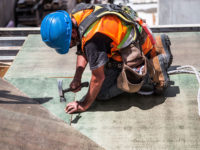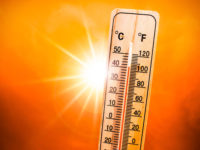Rising temperatures can spell trouble for construction crews and workplace safety managers. Though perspiration during warmer weather is to be expected, heavy PPE and certain gear, fabrics, and materials that block airflow can make workers feel hotter and uncomfortable to do their jobs properly. They may have trouble breathing and be at higher risk of dehydration or heat stroke. Some workers may even take their gear off if it becomes too much of a nuisance.
Wearing a hard hat or helmet is essential when there is a risk of head injury, but this equipment can also increase a person’s body temperature. We lose most of our body heat through our heads. Managers need to do everything they can to protect their workers in the field, keeping them as cool and comfortable as possible.
Learn how to choose the right type of hard hat or helmet when working in extreme heat during the summer months.
Before managers start looking for safety equipment for summer, they should remember that it’s never appropriate to compromise workers’ safety. Workers are required to wear protective gear, even on hot days. Everyone is required to comply with industry safety regulations regarding head protection.
Pay attention to the difference between hard hats and helmets. A hard hat consists of an outer shell with an inner lining. It helps protect the wearer from falling objects and other potential head injuries. However, hard hats don’t come standard with chin straps, so there’s a chance it could fall off if the worker bends down.
Helmets are made with similar materials, and are designed to offer protection against the same hazards as hard hats, including falling objects and head injuries. But they come with a chin strap that keeps the helmet firmly attached to the person’s head.
If workers are bending over or doing physically active tasks, they should wear a helmet with a chin strap to keep it firmly attached.
PPE like helmets and hard hats can have features that are geared towards warmer weather while still remaining compliant. Industry leaders should consider the following options when looking for summer-friendly workwear.
Vents for improved airflow
Many hard hats and helmets come with vents that allow air to pass through the sides or above the head. The circulation of air helps perspiration and moisture evaporate. In most applications, vents don’t interfere with the helmet’s ability to protect workers in the field.
Visors and shades
Visibility can be an issue when working in direct sunlight. Helmets and hard hats that come with built-in shades and visors keep workers cool while still being able to see what they’re doing. The material will extend over the person’s face or neck, so their skin isn’t exposed to the sun. It will also block the sun to help them see clearly. The shade will also reduce the person’s body temperature, while reducing the risk of sunburn.
Evaporative cooling pads
You can further reduce the risk of heat stroke by using hard hats and helmets with attachable evaporative cooling pads. The pad is soaked in cold water for 10 to 20 minutes. The person can then insert the pad into their helmet. The pad will reduce the temperature of their forehead continuously for hours and is washable and reusable. The pad is suspended between the outer shell and the wearer, so air can pass through, and the moisture can dry.
Additional summer-friendly safety equipment
Once workers have access to hard hats and helmets that help keep them cool, managers should look for other ways to further reduce the risks of sun exposure and heat stroke.
If workers are wearing short sleeves or shorts in the summer, workers should have access to sunscreen on the job. The sunscreen should come with a high SPF, usually 30 or higher. Workers can keep individual packets of sunscreen on their person, so they can easily reapply throughout the day.
Managers may also want to supply sunglasses that are UVA and UVB protected to help reduce the glare. However, workers will still need to wear goggles if they need additional eye protection.
Reducing the risk of heat stroke in the workplace
Managers should also conduct a thorough safety review of the workplace to see if their workers are at risk of sun or heat stroke. The most serious form of heat injury or heatstroke occurs when the person’s body temperature rises to 104° F (40° C) or higher.
Companies may need to make adjustments to the workplace to further reduce the risk. For example, they can set up tarps or tents to block the sun, if possible. They can also adjust the work schedule so that individuals don’t have to be outside during the hottest hours of the day.
Workers should also be able to stop and rest throughout the day if they get tired or need water breaks. Older individuals tend to be more susceptible to heat and sunstroke than younger workers. Managers should consider assigning tasks so that workers don’t have to be in the sun for more than a few hours at a time.
There should also be plenty of water available throughout the workplace, as individuals working in the sun will lose bodily fluids faster than they would normally.
Working in extreme temperatures or direct sunlight is no easy feat. Everyone should know the risks and warning signs of heat and sunstroke, so they can watch out for their fellow workers. Managers should consider the risks when assigning workers to these kinds of environments. The right equipment will help workers stay safe and cool on the job, so everyone can make it home safely.









